Hosta - The Ultimate Growing Guide from Proven Winners®
One of the most popular garden plants, hosta is grown primarily for the attractive foliage that occurs in a range of sizes, colors and forms. This hardy perennial thrives in challenging shady sites where many other plants won’t grow.
Buy hosta plants – Order perennials online and have them shipped right to your door
Hosta is virtually carefree and comes back reliably year after year. Hardy in USDA zones 3-9, this tough plant performs well in most landscapes, even for beginning gardeners.
Foliage occurs in shades of green, blue, white, gold, chartreuse and variegated patterns. Pointed leaves are heart-shaped or elongated, with smooth, pleated or wavy texture that creates depth in the landscape. Flower scapes appear in summer, bearing clusters of trumpet-shaped blooms in hues of white, pink, lavender or purple, with some varieties being fragrant.
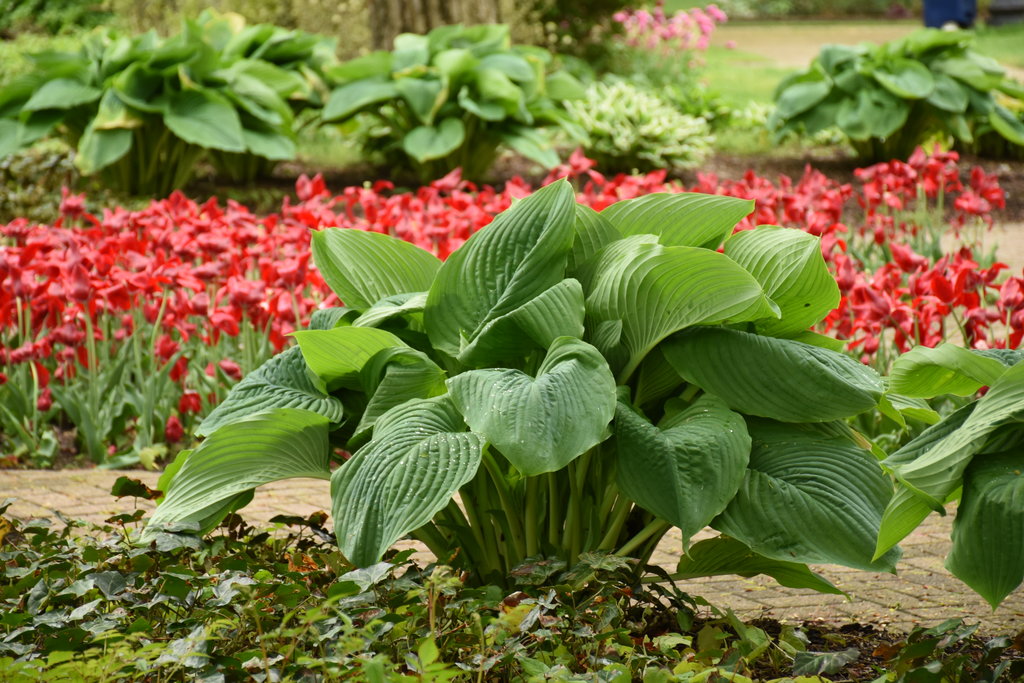 These versatile plants are widely useful when massed in a border or along a slope, as a foundation planting or stand-alone accent, in containers, or when combined with other woodland plants. With hundreds of varieties to choose from, you’re sure to find a hosta that suits your personal taste and style.
These versatile plants are widely useful when massed in a border or along a slope, as a foundation planting or stand-alone accent, in containers, or when combined with other woodland plants. With hundreds of varieties to choose from, you’re sure to find a hosta that suits your personal taste and style.
PLANTING & CARING FOR HOSTA
How to plant: Follow these steps to plant hosta in spring or fall, leaving enough space between plants to accommodate their mature width.
- Loosen the soil in the planting area to a depth slightly deeper and twice as wide as the root ball.
- Mix in compost or other rich organic matter.
- Dig a hole large enough to accommodate the root ball.
- Remove the plant from the nursery pot and tease out roots if potbound.
- Set the plant in the hole with the top of the root ball level with the surrounding soil.
- Fill in the hole with soil and tamp down gently to remove air pockets. Water well.
- Mulch with a layer of compost or shredded bark to retain moisture and suppress weeds.
Soil: Hosta prefers rich, well-draining soil.
For containers: Use a high-quality all-purpose potting mix. Make sure containers have drainage holes in the bottom. The container should be 4-6 inches wider and slightly deeper than the root ball. Learn more about growing hosta in pots.
Watering: Keep soil evenly moist, but not soggy, and don’t allow plants to completely dry out.
Fertilizing: In early spring, apply a granular all-purpose time-release fertilizer according to package instructions.
Pruning: Trim off dead or damaged foliage and spent flower stalks as needed. Allow plants to die back completely in the fall and clean up leaf debris.
TRY THESE PROVEN WINNERS® VARIETIES
Hosta plants come in a range of sizes, leaf colors and forms. Try these varieties in your garden:
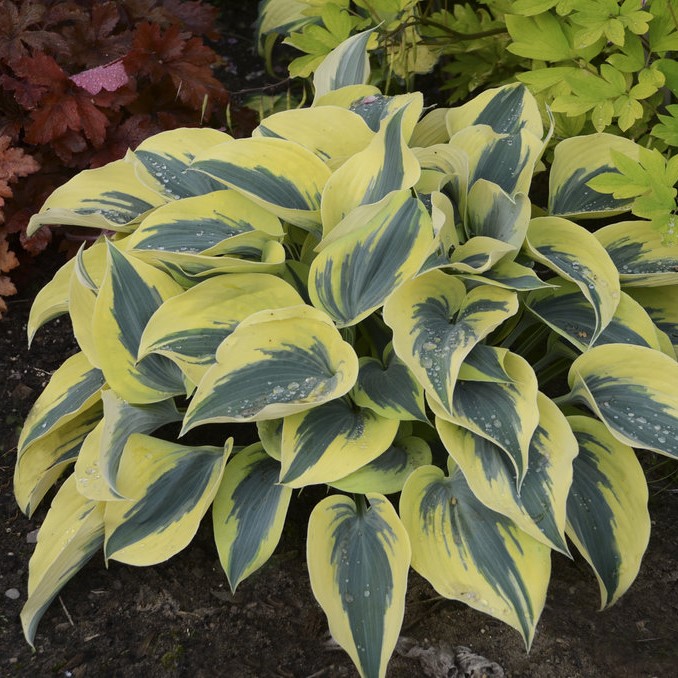 | Shadowland® ‘Autumn Frost’This striking variegated cultivar has elongated heart-shaped foliage. Frosty blue centers contrast with broad yellow margins that fade to creamy white in summer. Reaching just 1 foot tall and 2 feet wide, use this smaller form in containers or at the edge of a woodland border. |
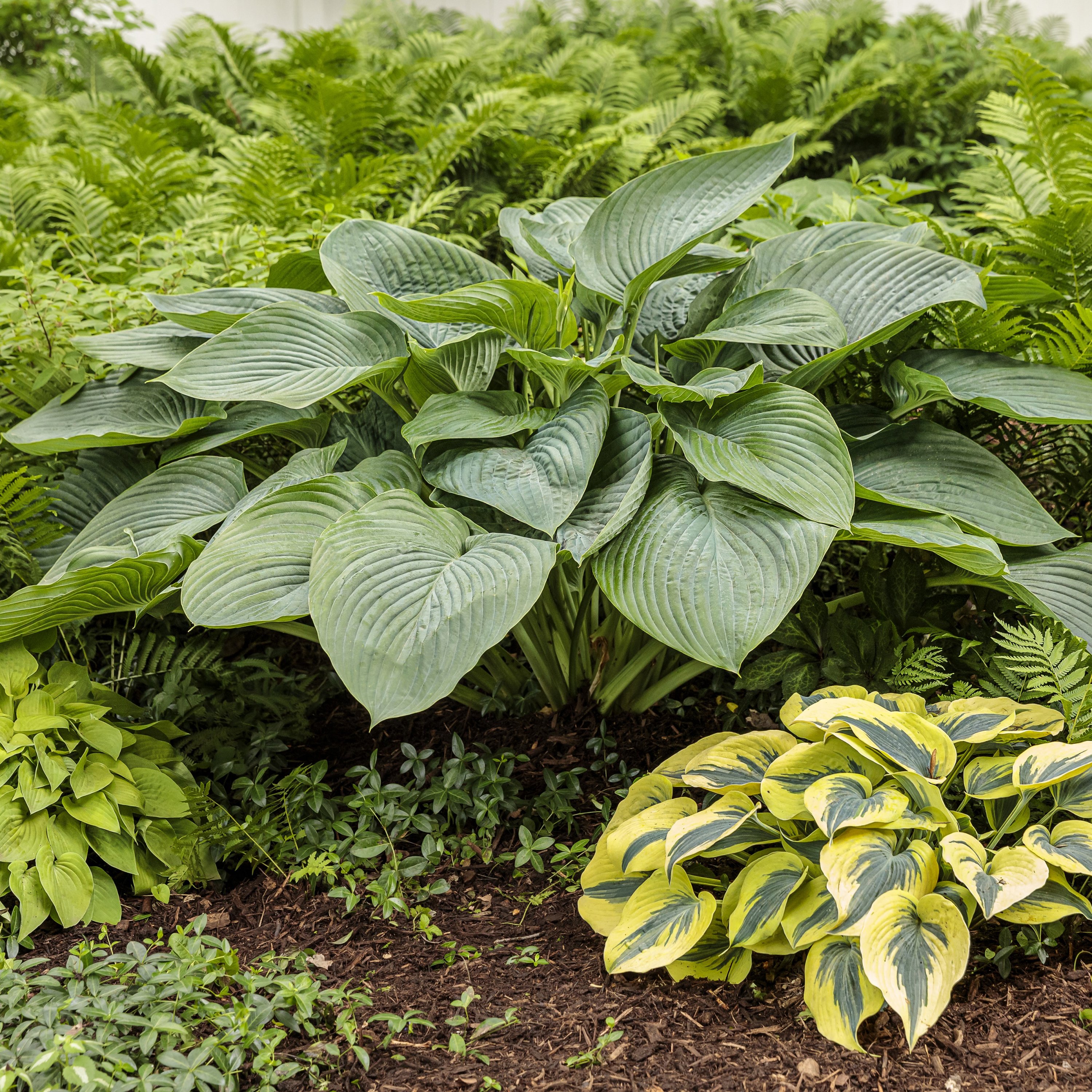 | Shadowland® ‘Empress Wu’One of the largest of all hostas, ‘Empress Wu’ reaches 4 feet tall and 6 feet wide, making a showstopping statement in any border or landscape. Huge puckered green leaves are topped by stalks of pale lavender flowers in summer. Use as a foundation planting or stand-alone accent in a shady area. |
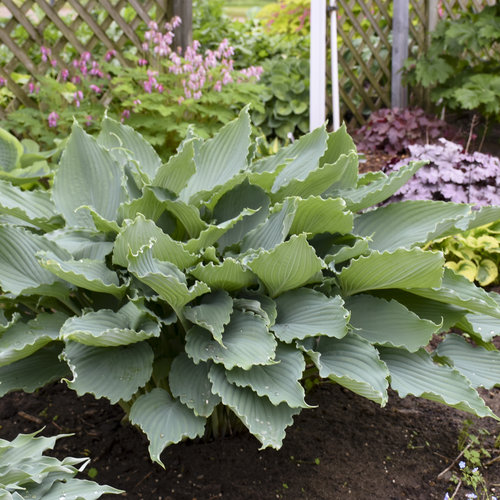 | Shadowland® ‘Diamond Lake’Add drama to a shady border with this bold-foliaged selection. Large heart-shaped leaves up to 9 inches wide and 11 inches long are bright blue with corrugated texture and have deeply scalloped edges. Pale lavender flowers that bloom in summer stand out against the attractive foliage. The thick leaves are resistant to slugs and snails. Use as a stand-alone accent in a container or combine with other hostas for a tapestry of color. |
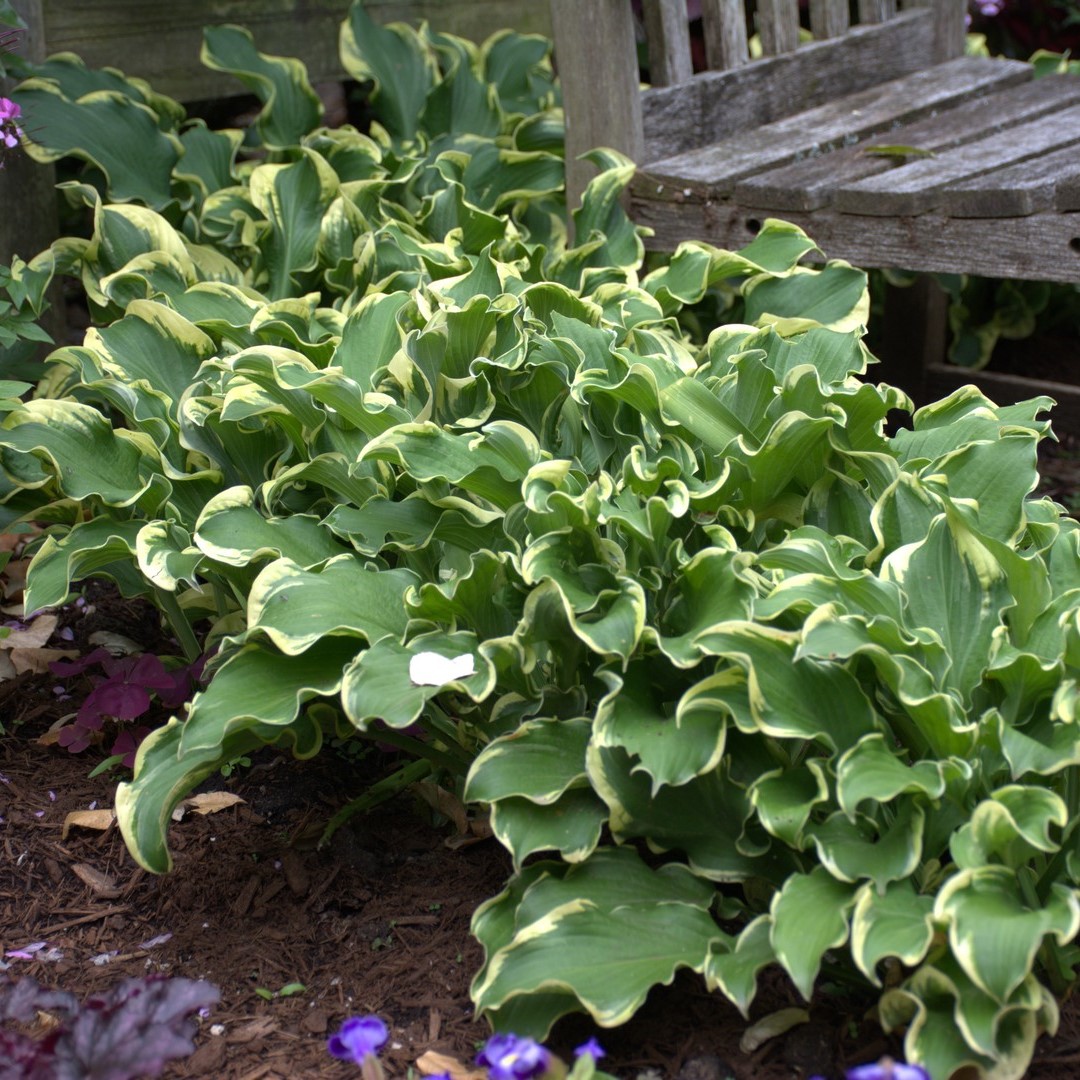 | Shadowland® ‘Wheee!’Deeply ruffled foliage creates a whimsical textural effect in the landscape. Elongated green leaves are rimmed with thin creamy white edges that become more pronounced as the plant matures. Plant this medium-sized variety in a shade border alongside Dolce® coral bells, or use it as an attractive stand-alone accent in a container. The thick leaves are slug-resistant. |
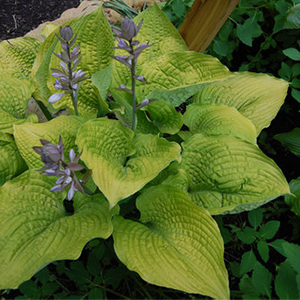 | Shadowland® ‘Coast to Coast’This robust variety produces large clumps of pleated foliage, maturing at 30 inches tall and 36 inches wide. The golden chartreuse coloring becomes brighter throughout the growing season, while pale violet flowers offer striking contrast in summer. Plant in a site that gets several hours of morning sun for best coloring. |
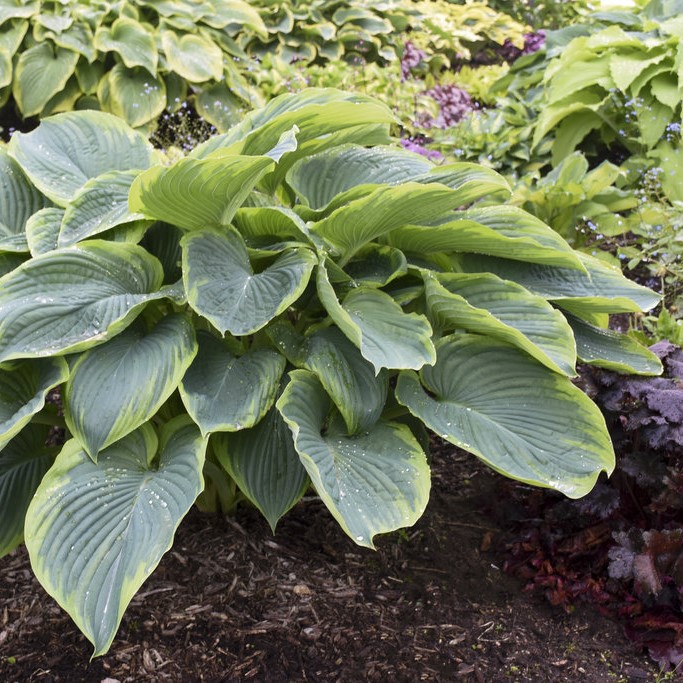 | Shadowland® ‘Wu-La-La’With the same impressive size of ‘Empress Wu’, the large, puckered blue-green leaves are rimmed with contrasting margins of light green. Plant as a stand-alone specimen underneath a tree or along a shady foundation. This variety takes 5 years to reach its full size. |
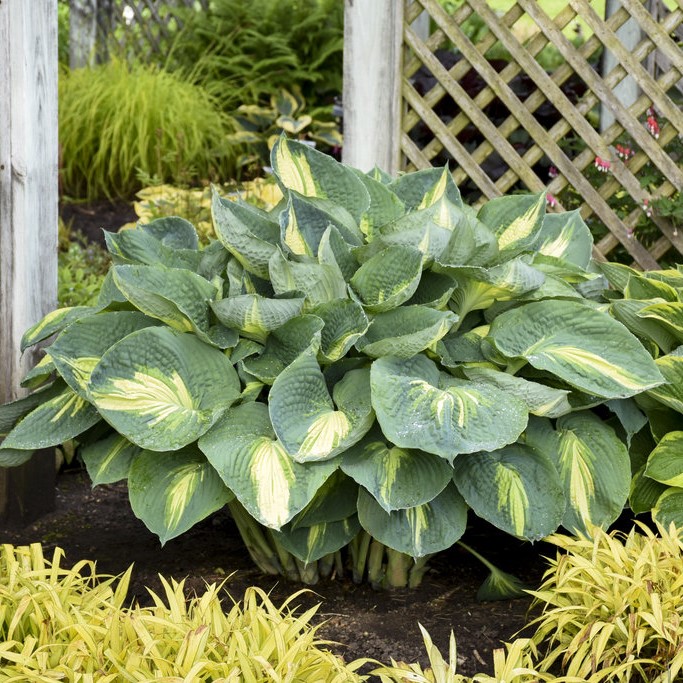 | Shadowland® ‘Hudson Bay’Bold pleated leaves have three shades of coloring, with wide blue-green margins and creamy white centers edged with irregular streaks of apple green. Showy vigorous clumps make a statement when massed in the landscape or combined with other shade lovers such as ‘Milk and Honey’ Chinese astilbe and ‘All Gold’ Japanese Hakone grass. |
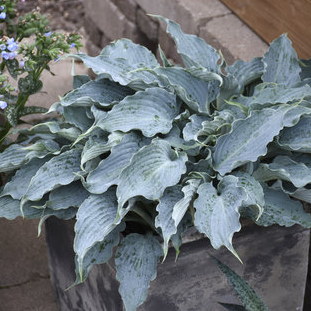 | Shadowland® ‘Waterslide’Unusual pale blue-green leaves hold their color all season long. The low spreading habit makes this variety suitable for containers or as edging for borders and pathways. Leaves add textural interest with deeply ruffled edges and slightly pleated markings. Combines well with woodland plants such as ‘Pretty in Pink’ lungwort and ‘Queen of Hearts’ brunnera. |
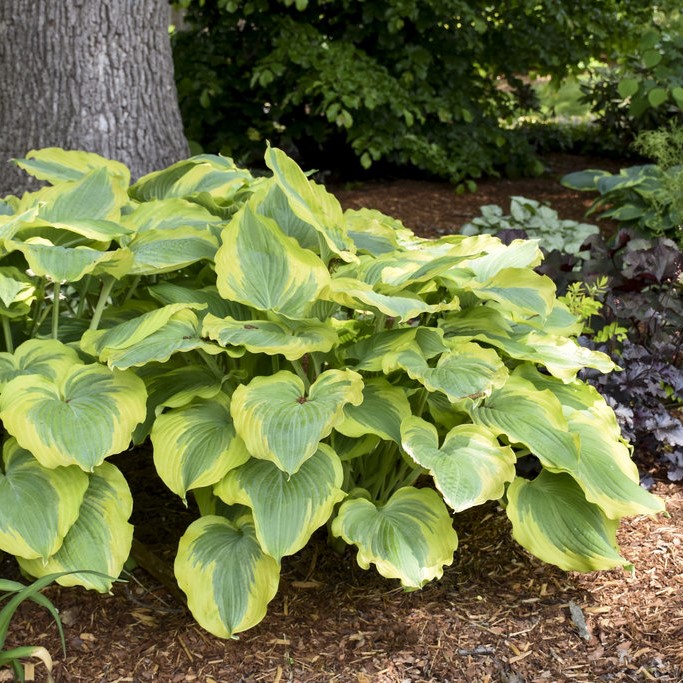 | Shadowland® ‘Seducer’Vigorous plants form large clumps of broad heart-shaped foliage. Slightly wavy leaves have a dark green center with wide golden margins. A creamy white line that develops between the two colors becomes more enhanced during the heat of summer, creating a striking halo effect. Plant as a stand-alone specimen, in a container or mixed border. |
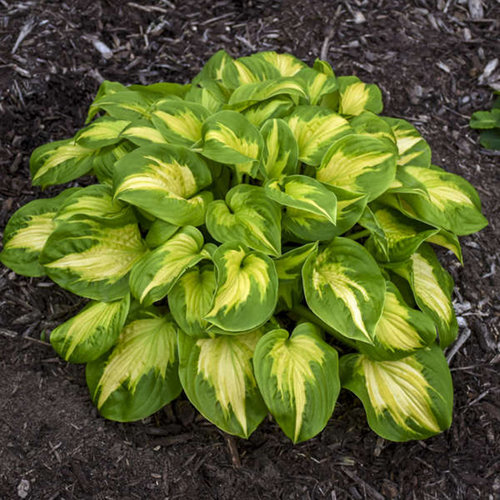 | Shadowland® ‘Etched Glass’Eye-catching foliage has bright yellow centers with dark green margins for dazzling contrast. The thick corrugated leaves develop wavy edges as plants mature, adding texture and depth to the landscape. Stately flower stalks 3 feet tall produce large fragrant white flowers beginning in early summer. Use this medium-sized spreading variety to light up a woodland setting, as a foundation planting, or as a specimen under a large shade tree. |
HOSTA FAQ’s
Where do hostas grow best?
These shade lovers are ideal for woodland settings, underneath large shade trees, or along a shady slope or foundation. Hostas can even thrive in containers.
Do hostas like sun or shade?
Most hostas need at least some bright light, preferably morning sun or dappled sunlight. Gold-leafed varieties require more light to bring out the vibrant leaf color. Fragrant hostas such as ‘Etched Glass’ need at least several hours of sun to develop flower stalks. Blue-leafed varieties require the most shade to prevent the protective waxy leaf coating from melting, which results in green leaves. Full sun or too much shade can result in faded coloring. Protect from hot afternoon sun to prevent leaf burn.
Are hostas perennials?
Hostas are reliable long-lived perennials in most regions (Zones 3 to 9). When planted in the right spot and cared for properly, they will come back year after year, often getting bigger and better with each season.
Do hostas spread?
These rapid growers get wider each year and can be divided every 3-4 years in spring or fall. Dig and lift the entire clump out of the ground. Cut into several sections with a sharp knife or shovel and replant.
How big do hostas get?
The largest hosta varieties can grow up to 4 feet tall and 6 feet wide. Miniature hostas may only reach a few inches tall and less than a foot wide. Most varieties are somewhere in between.
What eats hosta leaves?
Slugs and snails are the most common pests that cause leaf damage. Apply slug bait in early spring when new growth emerges and reapply as needed. There are many home remedies as well. Plant varieties with thicker leaves such as ‘Wheee!’ or ‘Wu-La-La’ are more slug-resistant.
Why are my hosta leaves turning yellow?
Yellow leaves can be caused by a number of reasons. These can include too much sun, improper watering, excessive heat or cold, disease, or natural dormancy at the end of the growing season. Make sure to determine the cause in order to successfully treat affected plants.
HOW TO USE HOSTA IN YOUR LANDSCAPE
Hostas make a versatile addition to any landscape. Try some of these ideas in your yard.
- Showcase a single specimen in a decorative container and display it in a prominent shady spot.
- Mass different hosta varieties in shade gardens or along a slope for a mosaic of color.
- Plant in a woodland setting in combination with other shade lovers.
- Add elegance to a shaded patio or deck by planting hostas in containers or as edging.
- Boost curb appeal by planting hostas in shady areas along the front of your house.
- Feature a large specimen in an island bed or underneath a shade tree.
- Use hostas to cover up spent foliage of spring-blooming bulbs such as tulips and daffodils.
- Mass a medium to large variety at the rear of a woodland border as a background plant.
- Lighten up a dark area such as a courtyard or fence line with a variegated or gold variety.
- Use a smaller variety as pathway or border edging.
Get more hosta garden ideas.
COMPANION PLANTS
Many other shade lovers go well with hostas. Here are some suggestions:
Combine gold or chartreuse varieties with plants that have complementary colored foliage or flowers such as:
- ‘Primo® ‘Mahogany Monster’ coral bells
- Honeymoon® Vegas Nights Lenten rose
- Soprano® Rose bedding impatiens
- Catalina® Midnight Blue wishbone flower
For a harmonious color scheme, plant blue varieties with:
- ‘Jack Frost’ heartleaf brunnera
- ‘Crested Surf’ crested Japanese painted fern
- Dolce® ‘Silver Gumdrop’ coral bells
- ‘Fire Island’ fern-leaved bleeding heart
Other companions include:
- Belarina® Amethyst Ice primrose
- ‘Brilliance’ Autumn fern
- Bollywood® azalea
- Proven Accents® Pink Chablis dead nettle




